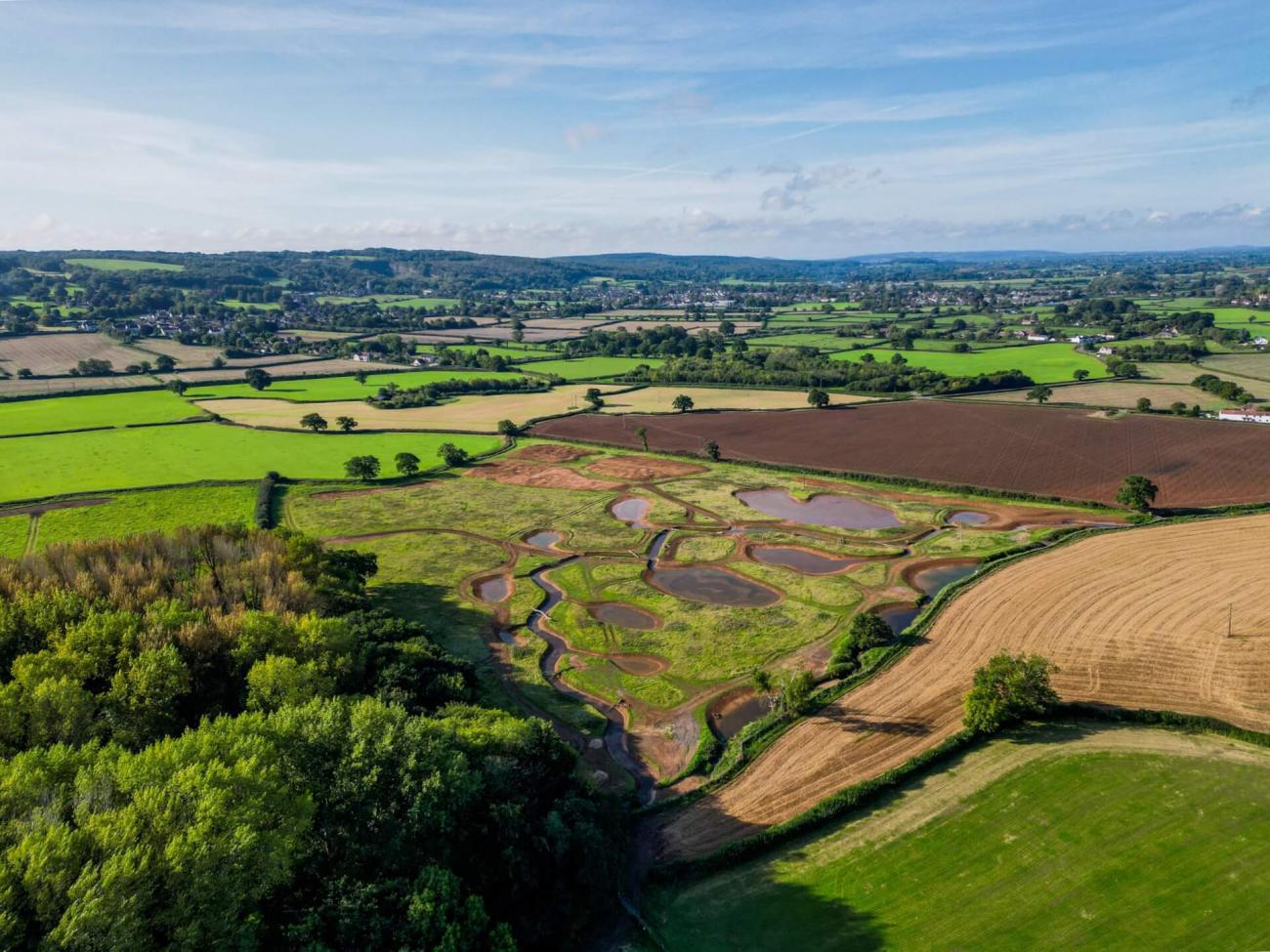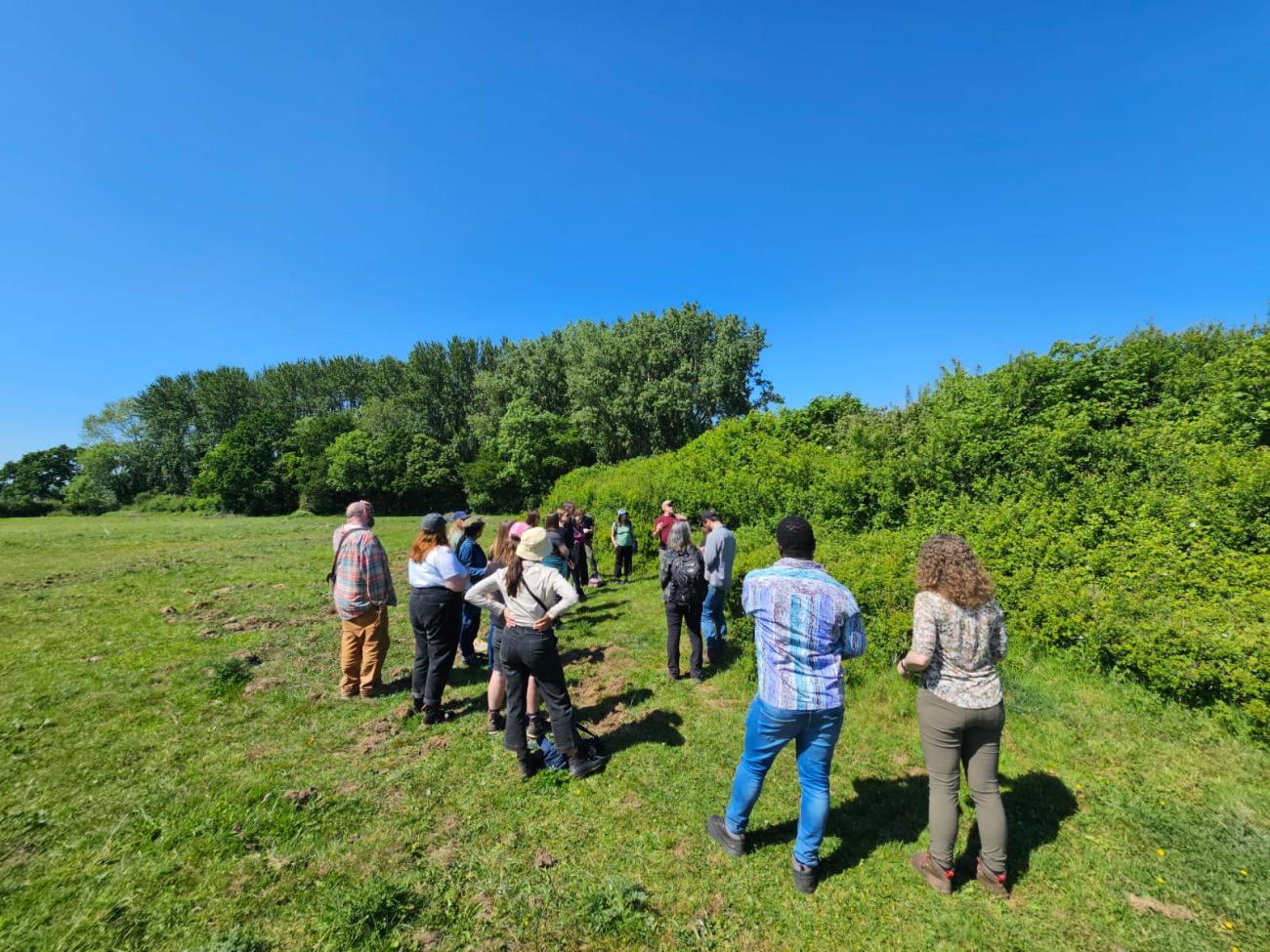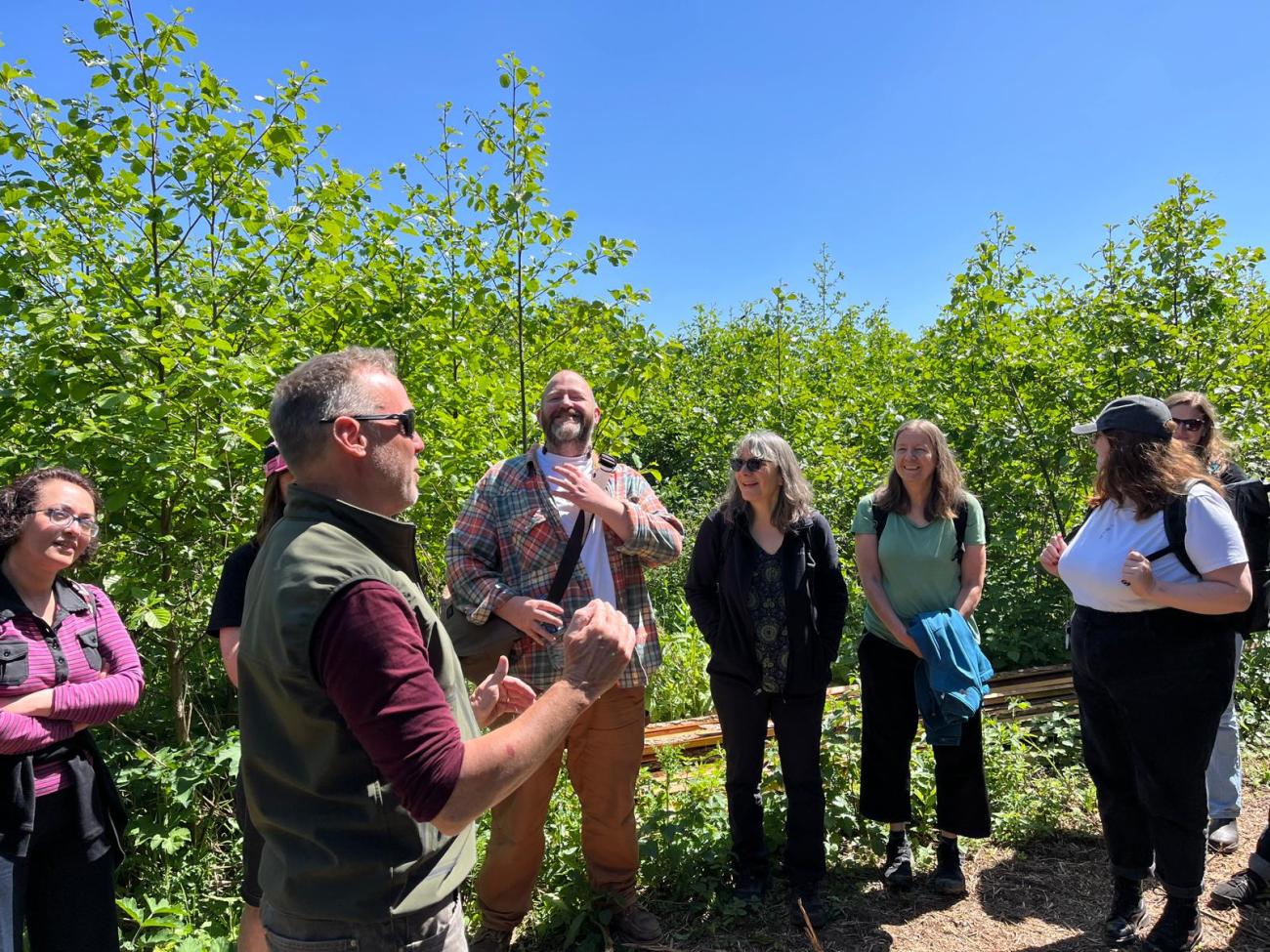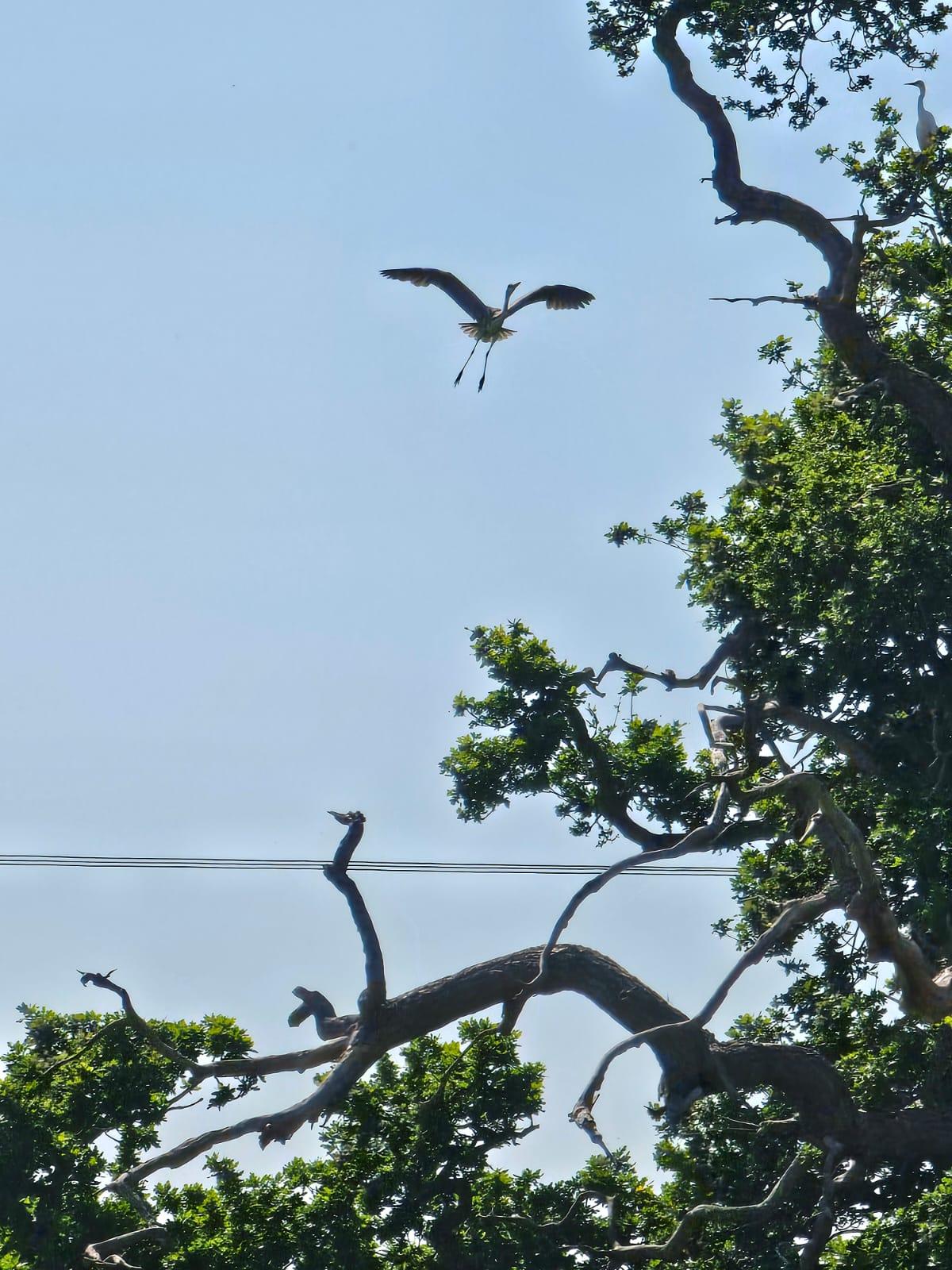Rewilding ventures like the restoration project at the Belmont Estate near Bristol, are becoming vital testbeds for how we restore biodiversity, adapt to climate change, and rethink our relationship with the land. As pressures mount on ecosystems across the UK, sites like this demonstrate what’s possible when nature is allowed to lead.
Alison Smith, Senior Research Associate at the ECI and the Leverhulme Centre for Nature Recovery, joined a group of researchers and students on a field visit to explore how the estate is putting rewilding theory into practice—offering lessons not just in ecology, but in community engagement, land management, and the future of conservation finance.

The Watercress Rewetting project transforming an environmentally degraded landscape into a biodiverse wetland supporting abundant wildlife.
On a beautiful May morning, 20 staff and students from the Leverhulme Centre for Nature Recovery (LCNR) and Biodiversity group set off to explore Watercress Farm, part of the 3,500-acre Belmont Estate, just west of Bristol. Our host for the day, Martin, had the enviable title of Head of Nature Connection, a role he carved out for himself after falling in love with the site when visiting as a teacher on a school trip. His enthusiasm shone through as he led us round the fields, woods and wetlands which have been rewilding for five years.
To reach our lunch venue - an open-sided roundhouse built by Martin and his team from local timber – we pushed through a large thicket of young alder trees that have naturally regenerated around the edges of a former arable field. Now about ten feet tall, they are flourishing without tree-guards or deer fences, despite the Roe deer that we saw bounding across the site. Every field is developing its own character – the next had young willow trees, and the next was full of the much-maligned ragwort – usually eliminated because it is toxic to livestock, but left to flourish for Cinnabar Moths and the many other insects that depend on it. Livestock will naturally avoid it when grazing, so it is only a problem if fed to them as hay. Another field was bordered by a massive mixed-species hedgerow, over twenty feet tall and wide, providing food and shelter for both wildlife and livestock. Cows push their way inside it to give birth.

Sitting incongruously in the middle of the farm is a fenced-off railway siding leading to a long-abandoned Ministry of Defence fuel storage depot. Now a rich tapestry of shrubs, trees, long grass and wildflowers, it is perfect habitat for reptiles and small mammals. A blaze of yellow birds-foot trefoil showed where the Red Devon cattle had munched their way through the long grass, allowing flowers to emerge. This breed was selected because it was closest to the ancient Aurochs, ancestors of modern cattle. Like the hardy Tamworth pigs, they can graze outside all year round, creating structural diversity and bare muddy patches where wildflowers can germinate – an essential part of the rewilding process. The fields are still dominated by ryegrass, the main species sown on intensive pasture, so a wildflower meadow is being created as a seedbank for the surrounding area.

Hundreds of volunteers help to monitor biodiversity on the Estate, walking butterfly transects and counting birds, reptiles and invertebrates. We met a student checking mammal tunnels, which capture the tiny inky footprints of mice, voles and hedgehogs that run over inkpads onto sheets of paper. Camera traps have recorded badgers and foxes, and hares are often seen. Biodiversity has exploded from a baseline of 380 species to over 2,000 today.

We finished in the new wetland complex, where a series of ponds have been excavated. The spoil has been piled up to make butterfly banks, seeded with wildflowers including Ox-eye Daisies and Kidney Vetch, the food plant of the Small Blue butterfly. In just a few years, the small river has developed gravel banks and riffles, fish have returned, and rushes and Yellow Flag Iris have self-seeded. White egrets and a heron flapped around lazily, skylarks sang, and a stork had been seen the day before, possibly visiting from the Knepp Estate. Cattle were happily cooling off in the unfenced ponds, free to follow their natural behaviour. Martin has a vision of a dynamic landscape reshaped by each flood event, as the river changes course, ponds dry out and new ones form.

Reconnecting with nature is part of the ethos of the Estate, which hosts free tours for everyone including schoolchildren, farmers, pensioners and corporate awaydays. At present, most activities are funded directly by the owners, but this is not sustainable in the long-term, so they hope to generate income as a Habitat Bank selling Biodiversity Net Gain credits, and/or carbon credits. While this is challenging at present, this project could deliver high-integrity credits to help restore trust in a market undermined by greenwashing.

Egret flying above the trees
Our visit was fascinating, inspiring and re-energising. Martin is keen to welcome us back, and is always open to collaborations, so please contact the estate if you have ideas for student projects or other research. Huge thanks to Dr Caitlin Hafferty, Researcher, ECI and Nick Sidwell, DPhil student, ECI, for organising the visit, and to the Leverhulme Centre for Nature Recovery (LCNR) and the SoGE Biodiversity Cluster at the School of Geography and the Environment (SoGE) at the University of Oxford, for funding our train fares and food.

